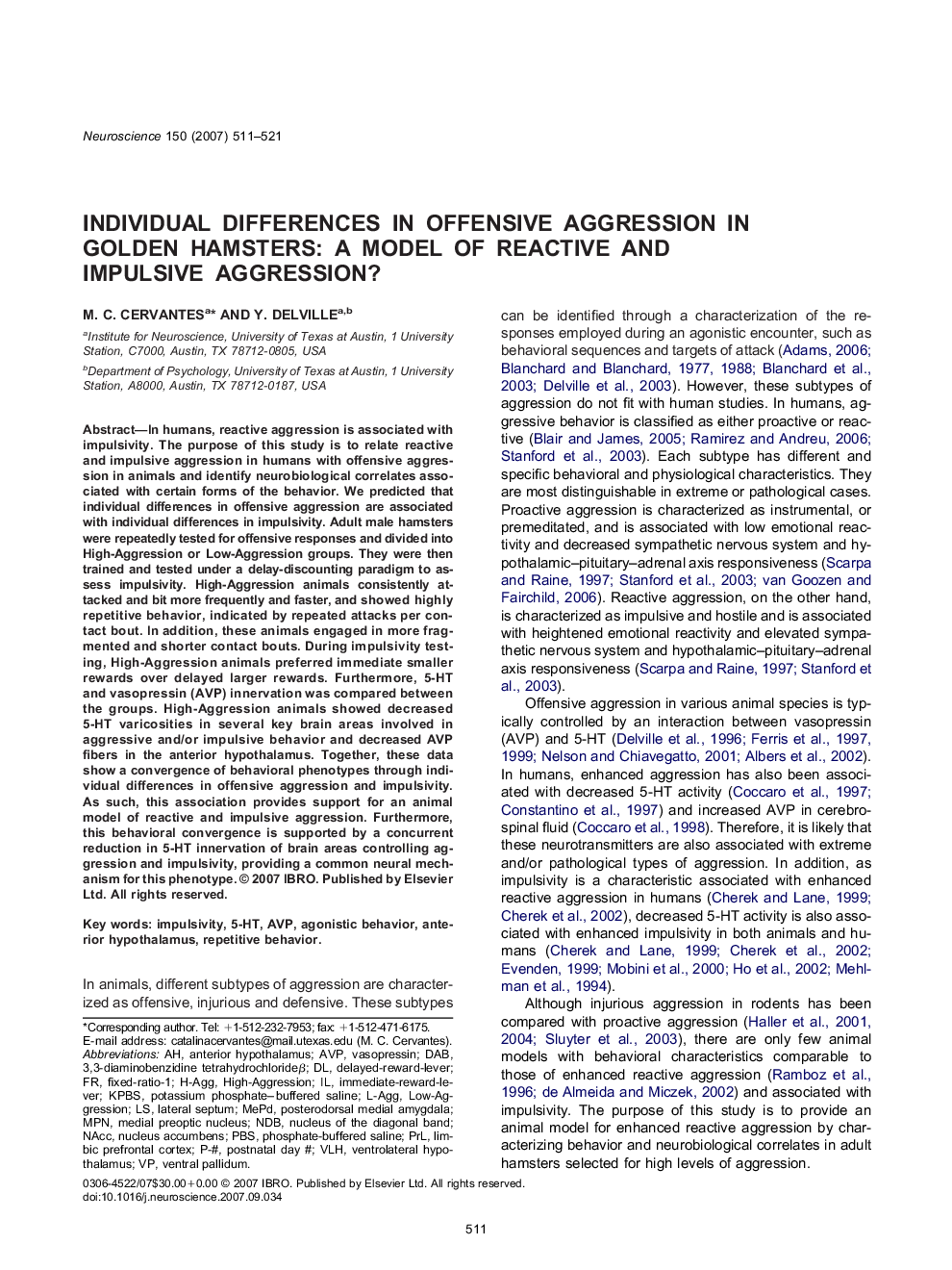| کد مقاله | کد نشریه | سال انتشار | مقاله انگلیسی | نسخه تمام متن |
|---|---|---|---|---|
| 4340939 | 1295817 | 2007 | 11 صفحه PDF | دانلود رایگان |

In humans, reactive aggression is associated with impulsivity. The purpose of this study is to relate reactive and impulsive aggression in humans with offensive aggression in animals and identify neurobiological correlates associated with certain forms of the behavior. We predicted that individual differences in offensive aggression are associated with individual differences in impulsivity. Adult male hamsters were repeatedly tested for offensive responses and divided into High-Aggression or Low-Aggression groups. They were then trained and tested under a delay-discounting paradigm to assess impulsivity. High-Aggression animals consistently attacked and bit more frequently and faster, and showed highly repetitive behavior, indicated by repeated attacks per contact bout. In addition, these animals engaged in more fragmented and shorter contact bouts. During impulsivity testing, High-Aggression animals preferred immediate smaller rewards over delayed larger rewards. Furthermore, 5-HT and vasopressin (AVP) innervation was compared between the groups. High-Aggression animals showed decreased 5-HT varicosities in several key brain areas involved in aggressive and/or impulsive behavior and decreased AVP fibers in the anterior hypothalamus. Together, these data show a convergence of behavioral phenotypes through individual differences in offensive aggression and impulsivity. As such, this association provides support for an animal model of reactive and impulsive aggression. Furthermore, this behavioral convergence is supported by a concurrent reduction in 5-HT innervation of brain areas controlling aggression and impulsivity, providing a common neural mechanism for this phenotype.
Journal: Neuroscience - Volume 150, Issue 3, 12 December 2007, Pages 511–521